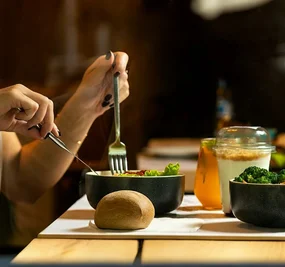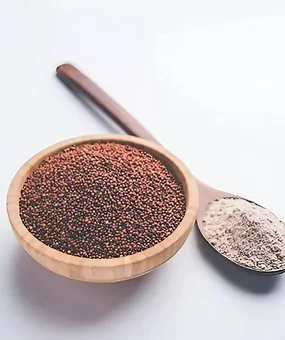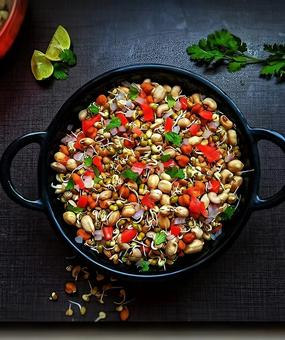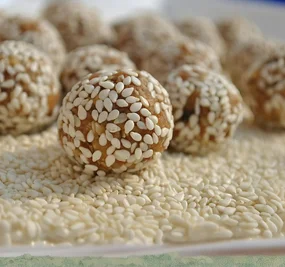You must have heard it often in the news. It is the latest buzzword among the health-conscious – a gluten-free diet plan. What is it? Why are people gravitating towards it like it is holds the secret key to good health? Here, we try to unravel the various questions surrounding the ingredient that we have been consuming for 10,000 years! We have also come up with a seven-day gluten-free diet plan for vegetarians to cater to your senses and system.
(1) What is gluten?
Gluten is a protein that occurs naturally in grains like wheat, rye and barley. It is responsible for making your atta or dough elastic.
(2) Is gluten dangerous? Should it be avoided by all?
Gluten is, what you call, a gut-irritant. It is not easily digestible and leads to accumulation of toxins in the intestine. This causes trouble to your digestive system. This is particularly harmful to people with celiac disease and non-celiac gluten sensitivity.
Former World No. 1 tennis player, Novak Djokovic follows a gluten-free diet plan. Such a diet was necessary for him as he was sensitive to gluten. His new diet plan helped improve his fitness exponentially and enabled him to reach the top position in men’s tennis.
However, there is no evidence to suggest that everyone should cut it out of their diet. If your metabolic fire is strong, you need not follow a strict gluten-free diet plan. However, some people may choose to follow the gluten-free diet plan for a few days in the month to help detox their system.
(3) What symptoms do gluten-sensitive people have?
Flatulence, abdominal pain, diarrhea, bloating, nausea, vomiting, constipation, weight gain or loss and acid reflux are some of the symptoms.
(4) Is gluten an additive or naturally-found in food substances?
According to the US public health organization Food and Drugs administration _(FDA), some grains are likely to contain naturally-occurring gluten in them. This includes wheat, barley, rye and hybrids of wheat and rye like triticale. Some products have it as an additive. For instance, gluten is added to bread to make it rise more easily; it also improves the texture and structure. Cakes, pizzas, and pasta also have gluten in them.
(5) What, exactly, is a gluten-free diet plan?
A gluten-free diet plan consists of a diet without all the foods that naturally have gluten in them. For people with severe reactions to gluten, it would be best to avoid any product that has come in contact with gluten in any form. For instance, if the water used to clean a product that has gluten in it has been used to steam your vegetables, this is indirect consumption of gluten. This can happen in restaurants. Also, avoid using the same containers and spoons used for gluten-free and other preparations.
(6) How will I benefit from a gluten-free diet plan?
- A gluten-free diet plan can help you to lose weight since the diet plan includes wholesome and unprocessed food, fruits and vegetables.
- Since gluten is a thick and sticky substance that is not easily digestible, its exclusion puts less pressure on your digestive system.
- Since gluten-free diet plans exclude foods such as pastries and donuts, you benefit from the healthier substitutes.
(7) What sort of gluten-free diet plan is suggested for vegetarians?
| Days/Meals | Breakfast | Lunch | Snacks | Dinner |
|---|---|---|---|---|
| Monday | Quinoa porridge | Spinach dal, rice, eggplant curry, curd | Vegetable wraps | Akki (Rice-bread) roti and mixed vegetable curry |
| Tuesday | Idli with sambhar/chutney | Sweet corn soup, pearl millet flat breads (bajra rotis), tomato lentils, green beans curry, lassi/curd | Fruits and nuts | Moong dal khichdi, vegetable curry |
| Wednesday | Millet porridge | Mixed greens salad, Rice, drumstick lentils (Toor dal), curd | Vegetable wraps | Beet salad with spinach, quinoa and carrot |
| Thursday | Poha (Beaten rice) | Chickpeas (channa) and pearl millet flat breads (bajra rotis), yogurt/curd | Fruits and nuts | Vegetable rice sevai, fried gra ms, and coconut chutney |
| Friday | Dosa with sambhar/chutney | Fenugreek split moong (methi moong dal), rice, cabbage curry, curd | Barbecued corn with chili and lime smeared on it | Khichadi, salad, capsicum and carrot curry |
| Saturday | Millet upma | Tomato soup, Sorghum flat breads (bajra rotis), Kidney beans (rajma) curry, lassi/curd | Vegetable wraps | Lemony lentils and radish and herbs salad with rice |
| Sunday | Oats porridge | Pearl millet flat bread (bajra roti) with bottle gourd kofta, lassi/curd | Fruits and nuts | Sambhar, cauliflower curry, rice |
Recipes:
- Quinoa porridge: Add the quinoa to boiled milk and heat for about 15 minutes till the milk is almost completely absorbed. The quinoa will become soft and suitable for the porridge. Add almonds and more milk.
- Vegetable wraps: Make a dough of gr
- am flour (besan) and rice flour. The consistency should be that of a dosa batter. You can spread this dough on a skillet, like a dosa, and add your choice of vegetables, slightly cooked, in it. Roll the dosa to form a wrap, and you have a healthy snack, ready to eat!
- Millet porridge: Boil millet with milk, water, and cinnamon till the water is completely absorbed. If you would like a sweetener, you may add raisins/dates/jaggery to it.
- Millet upma: Boil the millet with water in a container till the millet is well-cooked. Drain out the excess water, if any. Keep aside. Boil your choice of vegetables – carrots, beans, peas, tomatoes and add salt to taste. Warm oil or ghee and add mustard seeds, groundnuts, curry leaves, ginger and chilies to it. Now add the cooked millet to the vegetable mix and stir well. It is ready to eat!
- Oats porridge: Heat the oats in a little milk. Add your choice of nuts/raisins to the porridge.
(8) Are there any special cooking styles to be adopted in this diet plan?
Yes. Follow traditional cooking methods of cooking helps food to digest easily. This means you boil the rice and millet in an open container as opposed to steaming it in a pressure cooker. The excess water in it can be drained away, after the rice/millet is cooked sufficiently. This will flush out the starch in the rice and millet that may contain gluten. Also, it would be best to eat wholegrains; the more refined the grain, the more difficult it is for the body to process.
(9) Are there any other points to keep in mind with this gluten-free diet plan for vegetarians?
- You may use a choice of vegetables – ridge gourd, bottle gourd, lady’s finger, beans, cabbage, cauliflower, carrots, bell pepper, eggplant, peas and so on.
- For both fruits and vegetables, consume those in season to minimize the incidence of preservatives. For instance, with summer approaching, mangoes will be in season. Cauliflowers and cabbage are freshest in winter.
- You can opt for your choice of dry fruits and nuts – hazelnuts, walnuts and almonds, dry grapes, dates, and figs.
- Avoid processed and refined food like ready-to-eat cereals.
- Avoiding grains that have gluten in them can also deprive you of some vital nutrients. Ensure that you rotate the lentils, vegetables, and fruits to get all the nutrients from different foods.
- Green tea, lemon juice, lassi (churned curd), fresh fruit juices and smoothies may be ideal beverages.
(10) Can anyone with gluten sensitivity follow this gluten-free diet plan for vegetarians?
This diet plan is suitable for a person with sensitivity to gluten. However, while the gluten-free diet plan caters to gluten sensitivity, it may not suit other imbalances your body may have. So, it would be best to seek the advice of an Ayurvedic doctor for a customized gluten-free diet plan. It may even be tweaked to help you lose weight and take care of any other imbalances.
If your agni or digestive fire is strong, you would not have gluten sensitivity. It might help you to do yoga, pranayama and meditation and follow a balanced lifestyle with a healthy diet. An Ayurvedic doctor could guide you on the herbs you can eat to strengthen your agni.
To understand your metabolism, allergies, sensitivities, and tendencies, the Ayur Jagruti wellness program would be ideal. You may enquire regarding the Ayur Jagruti program, by writing to ayurjagruti@vvki.org.
(This article was written with inputs from Dr. Sharika Menon, Ayurvaidya, Art of Living)















